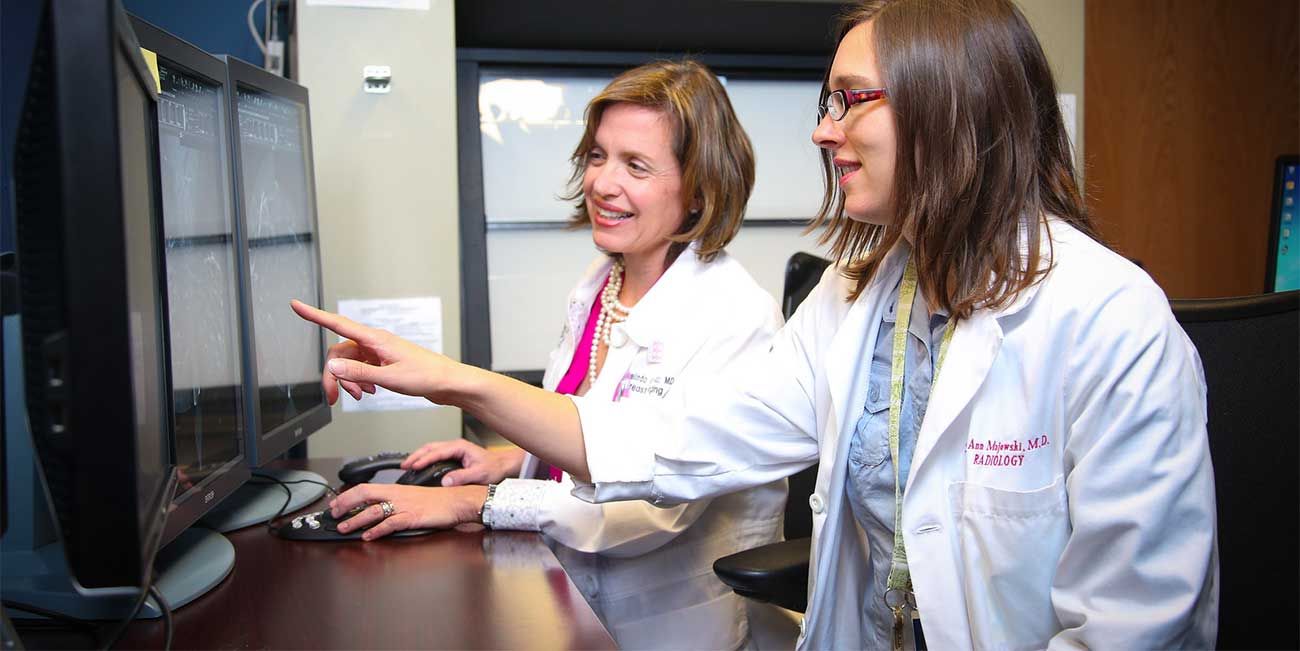For women over the age of 40, getting a yearly screening mammogram is an essential part of maintaining their breast health. While most mammograms are normal, occasionally additional imaging will need to be performed. Getting a call from your physician asking you to come back in for additional tests can be nerve-racking for any issue, but especially so when it might be breast cancer.
Advancements in technology have improved our ability to find smaller breast cancers, while decreasing the need for additional images. In 2011, the Food and Drug Administration approved the use of tomosynthesis or 3D screening mammography. Since then, multiple studies have found that 3D screenings have reduced the need to recall patients for additional images up to 17%.
“The 3D mammogram is really proving itself to be a better mammogram in that it reduces the need for additional views and may reduce patients’ anxiety,” says Ermelinda Bonaccio MD, FACR, Chair of the Department of Diagnostic Radiology at Roswell Park Comprehensive Cancer Center. “It’s also a more sensitive mammogram for picking up small breast cancers.”
Occasionally, the positioning of a woman’s breast during her mammogram will cause the breast tissue to overlap. When reviewing the images, that overlapping tissue can look similar to a mass within the breast. “With a 2D screening, if there's a question of overlapping breast tissue, the patient will need to come back in for additional mammogram pictures. With the 3D screening, instead of having to repeat images for overlapping tissue, we can often see it clearly on the first screening,” says Dr. Bonaccio. “A 3D mammogram allows us to scroll through a mammogram like flipping through the pages of a book. It also adds another layer of confidence that you can scan through the tissue and see that there is no underlying mass.”
Never miss another Cancer Talk blog!
Sign up to receive our monthly Cancer Talk e-newsletter.
Sign up!All mammography units at Roswell Park are equipped to perform 3D screening mammography, with all mammograms being reviewed by physicians specializing in breast imaging.
For patients, a 3D mammogram is very similar to a 2D screening. “They look and feel similar, they have the same amount of compression of the breast,” says Dr. Bonaccio. “The main difference is a 3D scan has a slightly longer acquisition time to take images. 3D takes about six to seven seconds per image as opposed to two to three seconds with a 2D scan.”
An essential goal of annual screening mammograms is detecting breast cancer early in its development. Studies have shown that 3D screenings catch more early-stage invasive breast cancers than 2D mammography alone. The five-year disease-free relative survival rate for invasive breast cancers that are caught early is 98 percent. That number goes down to 86 percent if found later as a stage II.
“Our goal is to pick up small, invasive cancers that are less than a centimeter and have not spread to the lymph nodes. 3D screenings have helped us pick up these small invasive cancers that are still node negative—meaning the cancer hasn’t spread to any lymph nodes—giving the patient the most treatment options,” says Dr. Bonaccio.
For information on 3D screening or to schedule your mammogram visit: roswellpark.org/mammography or call 1-877-275-7724.


